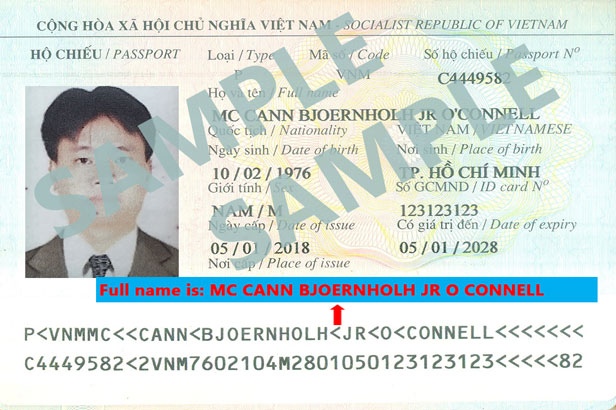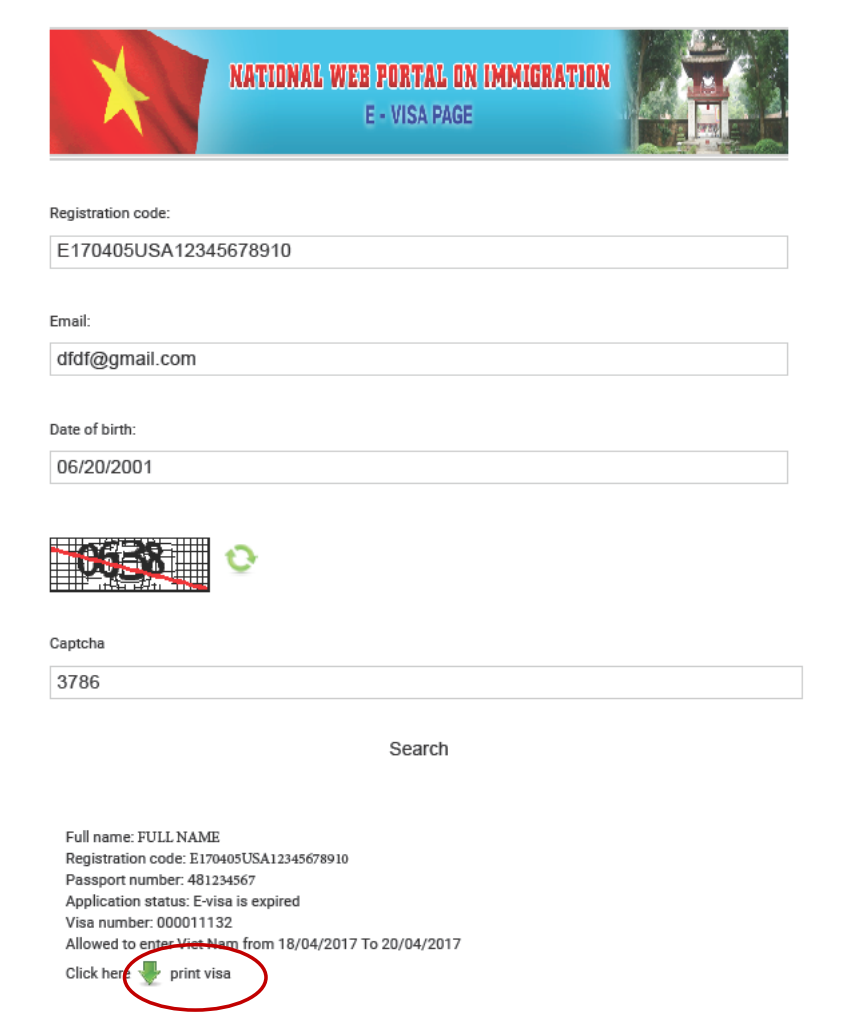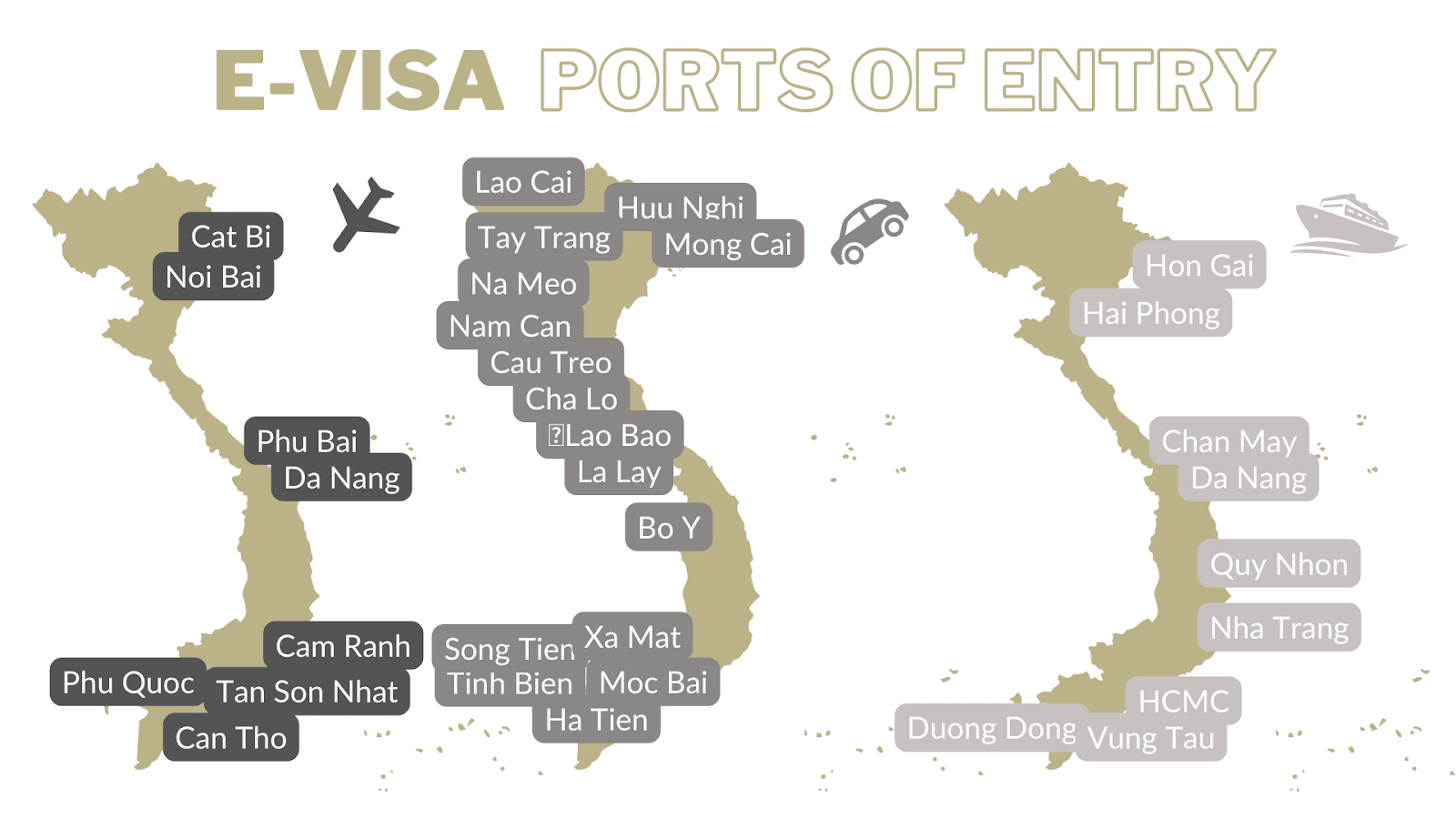How to Apply for a Vietnam E-Visa
- Is e-visa legitimate?
- What is the official site to apply and learn more about Vietnam e-visa?
- What should I prepare prior to applying for an e-visa?
- How do I know if my application is approved? If not, can I reapply immediately?
- What are the Ports of Entry in Vietnam that allow an e-visa entry?
- Can I extend or renew my e-visa within Vietnam?
First and foremost, isn't it common knowledge that not having to apply for a visa is always better than having to apply for one? Therefore, if you are planning a short trip to Vietnam, make sure to check the list of visa-exempt countries first.
In the event that your passport does not hold such status, read on, pocket yourself the most important tips to avoid future complications and enhance your chance of getting an approval quickly when applying for e-visa - the most convenient type of visa in Vietnam thus far.
Is e-visa legitimate?
Yes. E-visa in Vietnam is not a hoax. The shift from queuing and waiting at a brick-and-mortar office to online processing for visa requests has recently been approved by the Government of Vietnam, and implemented by the Vietnam Immigration Department of the Ministry of Public Security.
The pilot program, initiated in 2017 and concluded in 2020 with favorable outcomes, aims to allow the Vietnamese tourism sector to compete effectively with that of other countries in the region. Another added value following this change is how the implementation can dismantle barriers involving dubious intermediaries and outnumbered applications at Vietnamese visa-granting agencies overseas and at international entry ports in Vietnam.
Regarding the e-visa program itself, there are certain amendments starting from August 15, 2023 that you should be informed about:
(1) Your e-visa is now issued under the “EV" category.
(2) The entire process is carried out on an all-in-one online platform: from application submission, fee payment, application tracking, to visa issuance. The best of all is that individuals can choose to apply by themselves without the help of an organization or an intermediary.
(3) Passport holders of all countries and territories can apply for an electronic visa.
(4) Both single entries and multiple entries are up for grabs. Previously, only single entries were allowed.
(5) E-visa can be granted for a maximum 90-day stay, instead of the former limit of 30 days, providing non-native travelers with increased freedom and flexibility in planning their stay. However, there is no guarantee that the duration you wish to obtain will turn out to be exactly the same as the permitted period of stay on your approved visa. With that being said, there have been instances of tourists applying for a 14-day trip; yet they were still granted the maximum 90-day duration on their e-visa. On the other hand, others who expected a 3-month arrangement only got a 2-week approval and had to adjust their trip accordingly.
Please note that you can also have an inviting or guaranteeing authority, organization, or individual apply for an e-visa on your behalf. Learn more about this case from the official site.
Legal references: Amended Law No.23/2023/QH15, Resolution No.127/NQ-CP
What is the official site to apply and learn more about Vietnam e-visa?
To kick off the application process, go to the Registration Page administered by the Vietnam Immigration Department (Ministry of Public Security):
• For Vietnamese language: https://evisa.xuatnhapcanh.gov.vn/web/guest/khai-thi-thuc-dien-tu/cap-thi-thuc-dien-tu
• For English language: https://immigration.gov.vn/en_US/web/guest/khai-thi-thuc-dien-tu/cap-thi-thuc-dien-tu
To keep track of the application status or amend any data entry until your visa is cleared, fill in the information on this E-visa Search Menu, also administered by the Vietnam Immigration Department: https://immigration.gov.vn/tra-cuu-thi-thuc
Up until now, there is yet a mobile app available to facilitate this administrative task. Plus, to avoid minor disruption during your application, a PC / laptop would be preferable to a mobile phone or a tablet.
What should I prepare prior to applying for an e-visa?
Filling out as many fields as possible, besides the asterisk-marked ones, is a good place to start. However, here are a couple of other useful tips for you:
Portrait photo and Passport data page image
Make sure your portrait photo adopts a white background with both your ears visible, your eyes looking straight with no accessories obstructing the recognition of your facial features such as hats, glasses, sunglasses, earrings, necklaces, and piercings, except for religious circumstances.
The passport data page, usually on the first and second page, contains all the crucial information needed to prove a traveler's identity. Therefore, a blurry, garbled image is clearly out of the question. Harsh reflections of light should also be avoided. Remember to crop out any frivolous parts on the outer edges and expose all the writings on the page.
Note that both images must be uploaded in '.jpg' format, with the portrait photo following the 4x6 cm format (or 2x2 inches) remaining under 50KB and the data page under 200KB in size.
ICAO name fill
Names can be a bit tricky to identify. In this case, pay attention to the written lines at the bottom of the data page (Figure 1).

Figure 1. A sample of the ICAO line at the bottom of your passport data page (Source: Immigration e-visa application website)
Another thing worth noticing on the application site is that the "Full Name" field, which previously required a single input, has now been divided into two distinct fields: "Surname" and "Given Name." Therefore, in the example above, the appropriate data entry should be:
Surname: MC Given name: CANN BJOERNHOLH JR O CONNELL
(1) Your Surname is identified from the letters before "<<," and your Given Name from the letters after "<<" until the end of the first line.
(2) Use capital letters and 26 letters of the English alphabet. No diacritics and non-English characters from other languages such as Hebrew, Arabic, Chinese, Korean, Japanese, Thai, etc. can be registered into the system. Have only one blank space between each name and remove any apostrophe.
(3) If you do not have a Surname, do not leave the field blank as this might trigger the system to prompt a blank space error. Instead, add a hyphen “-”.
Purpose of entry
Unless you have to, try to keep the travel purpose within the "tourism" parameter, as any deviation from this may result in a request for complementary documents and a longer process.
Payment
After your information declaration on the website, you will be asked to review the information on a separate page. When you are satisfied with the information, click “Pay e-visa fees" at the bottom of the page to proceed to the payment gateway.
Depending on the e-visa you are requesting, the one-time fee would vary between US$25 for a single entry and US$50 for a multiple entry.
The fee remains non-refundable in the event of application rejection. Usually, if your application needs amending, you do not have to submit any recurring fees. Only in the case that you submit a new application must you pay the fee again.
Despite the wide range of payments available on the portal, the most popular and guaranteed ones for outbound tourists are debit or credit cards issued by Mastercard, Visa or JCB.
The other means of payment include:
- Payoo electronic wallet
- Vietnam-based bank accounts
- Cash submission at convenience stores that are within the network of Payoo payment: B's mart, FamilyMart, CircleK, Ministop
Copy and paste the exact “Description” writings instructed on the portal in your transfer description, if any.
Result notification
There is no official statement on whether the result will be notified over email or not although applicants still receive emails of approval and rejection from the Immigration office every day.
With that being said, it is important for you to always keep track of the progress in the next few days from the status tracking website, using your one-time registration code, your email and your date of birth to view your status.
Always remember to save your registration code and check your spam inbox to avoid missing new updates.
Processing time
The official portal states that it will take approximately three (03) working days to conclude a submission, starting from one day after the date of application and fee submission.
However, it is always best to apply at least two to three weeks in advance as other issues, as mentioned in this article, may arise along the way. Expect a delay when it comes to national holidays and weekends as well.
Preparation will certainly save you from unnecessary stress when your application status still shows “Amending" 24 hours before your flight!
Inaccuracy of personal information
This may sound improbable at first, but it has happened more often than you think it should.
Be aware that the Immigration office will neither respond via email nor amend information on your visa application.
Therefore, the ultimate solution here is to reapply through the first Registration Page as you cannot amend your information when your status is shown as “Approved". After that, just continue keeping track of the status and the information accuracy.
How do I know if my application is approved? If not, can I reapply immediately?
In case of success or “Approved" (congratulations!), you will receive an email and a status change on the E-visa Search Menu. Do not forget to print out your e-visa (color or black and white are acceptable) before your departure date. You would need to show another printed copy of it when you leave Vietnam as well. That’s why it is better to have 2 copies ready with you.

Figure 2. A sample of Visa Approval on the Official Tracking Site of the Vietnamese Immigration Department
As stated earlier, it is crucial that you scan for inaccuracy on the issued e-visa file since this may complicate your arrival in Vietnam and quite a lot of tourists applying in 2023 have encountered this problem.
Every electronic visa is also accompanied by a unique QR code representing a visitor's personal information each time they enter, transit, or exit the country.
On the other hand, the Immigration office reserves all the right to reject your application without further explanation. In this case, the “Application status" field will show “Amending". To resolve the issue, you may:
(1) Double-check the data input for any possible cause against the Immigration law of Vietnam and try submitting your application again after one (01) day. When reapplying, log onto the E-visa Search Menu instead of the Registration Page, to avoid paying the fee again, and simply enter the same registration code, registration email, and your date of birth to update the application.
(2) Check the section inquiring, "Have you been to Vietnam in the last one year?" If the latest exit date ("to" column) you filled in is later than the current date, the Immigration office may have identified this as an attempt to apply for a new e-visa from within Vietnam. This situation could result in the rejection of your application. What you can do if you find yourself in this situation is to either leave out the current visit as it is not a mandatory field, or enter an exit date earlier than the current date.
(3) Similarly, check the section inquiring, “Permanent residential address" and “Contact address”. If the address you filled in is a Vietnamese address, the Immigration office may have identified this as an attempt to apply for a new e-visa from within Vietnam as well. This situation could result in the rejection of your application. Just replace the Vietnamese address with an address in your country of origin and reapply.
(4) Seek assistance from an independent agency that has had experience in handling similar cases for citizens of your nationality. Expect varied fees when it comes to these services.
What are the Ports of Entry in Vietnam that allow an e-visa entry?
Arrive in Vietnam at the exact entry point they declare on your visa as you could be denied entry if your arrival port does not match what is stated.
Find all the international border gates that accept Vietnam electronic visa entry, transit and exit below (Figure 3).

Figure 3. 13 airports, 16 border gates, and 13 sea gates allow e-visa entry, transit and exit. (Source: Vietnam Immigration Department)
Can I extend or renew my e-visa within Vietnam?
Unfortunately, it is currently impossible to carry out the extension or renewal of your e-visa before your exit from Vietnam as the application does require you to declare the latest visits you have made to Vietnam in the past one year. Failing to assert that you are out of Vietnam before applying is certain to result in a rejection.
Instead, it is advisable that you leave the country by the stamped date of exit, either back to your country of origin or a neighboring country of your choice, go through the same e-visa application process, and re-enter Vietnam after acquiring a new e-visa.
